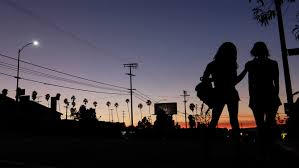Posted: August 4, 2015 | Author: Donald | Filed under: Uncategorized | Tags: Amelie, Callum Keith Rennie, Chris Bergoch, Dominque Pinon, Escape from Tomorrow, Guerilla filmmaking, Guillaume Laurant, Helena Bonham-Carter, James Ransone, Jean-Pierre Jeunet, Judy Davis, Kitana Kiki Rodriquez, Kyle Catlett, Mya Taylor, Rome: Open City, Sam Fuller, Sean Baker, Tangerine, The Crimson Kimono, The Young and Prodigious T.S. Spivet, Thomas Hardmeier | 1,684 Comments »
First, a word from our sponsors: I am now offering a new service: so much emphasis has been given lately to the importance of the opening of your screenplay, I now offer coverage for the first twenty pages at the cost of $20.00. For those who don’t want to have full coverage on their screenplay at this time, but want to know how well their script is working with the opening pages, this is perfect for you. I’ll help you not lose the reader on page one.
Ever wonder what a reader for a contest or agency thinks when he reads your screenplay? Check out my new e-book published on Amazon: Rantings and Ravings of a Screenplay Reader, including my series of essays, What I Learned Reading for Contests This Year, and my film reviews of 2013. Only $2.99. http://ow.ly/xN31r
and check out my Script Consultation Services: http://ow.ly/HPxKE
Warning: SPOILERS
 Guerilla filmmaking is nothing new to the world of cinema. It’s probably existed since the first motion picture camera was invented. But perhaps the most famous and influential one is Rome: Open City in which the action is often filmed on the streets of a newly un-Nazi occupied Rome with a mixture of amateur and pro actors.
Guerilla filmmaking is nothing new to the world of cinema. It’s probably existed since the first motion picture camera was invented. But perhaps the most famous and influential one is Rome: Open City in which the action is often filmed on the streets of a newly un-Nazi occupied Rome with a mixture of amateur and pro actors.
It’s never not gone out of style since (Sam Fuller uses it during the opening scenes of The Crimson Kimono, for example), but bulky cameras and sound gear made it very difficult. Now with smaller, cheaper and easier to use film equipment, it has been on the rise.
Most notably and recently we had Escape from Tomorrow, much of it secretly shot at Disneyland and Disneyworld (and often impressively so). But that film lacked a strong and focused narrative until it felt like the writer and director ultimately lost control of it all and the final third never came together in a satisfying way.
And now we have Tangerine, shot not just on the streets of Los Angeles (mainly on Santa Monica between Vermont and Highland, though it does extend to West Hollywood at one point), but also on busses, motels and in fast food restaurants, especially a donut shop manned by a very beleaguered clerk. Read the rest of this entry »
 Guerilla filmmaking is nothing new to the world of cinema. It’s probably existed since the first motion picture camera was invented. But perhaps the most famous and influential one is Rome: Open City in which the action is often filmed on the streets of a newly un-Nazi occupied Rome with a mixture of amateur and pro actors.
Guerilla filmmaking is nothing new to the world of cinema. It’s probably existed since the first motion picture camera was invented. But perhaps the most famous and influential one is Rome: Open City in which the action is often filmed on the streets of a newly un-Nazi occupied Rome with a mixture of amateur and pro actors.